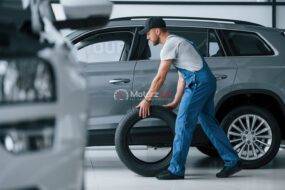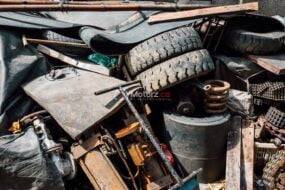Child Passenger Safety Choosing the Right Car Seats In the fast-paced world of parenthood, where safety is a paramount concern, one crucial decision stands out—choosing the right car seat for your child. The journey of parenthood is a thrilling ride, but ensuring your child’s safety during every literal and metaphorical twist and turn on the road is non-negotiable. Car seat selection is not just about compliance with the law; it’s a commitment to your child’s well-being.
The Importance of Car Seats: Beyond Compliance
Car accidents are an unfortunate reality, and the vulnerability of Child Passenger Safety makes it imperative to secure them in appropriate car seats. According to the Centers for Disease Control and Prevention (CDC), car seats reduce the risk of death in car accidents by 71% for infants and 54% for toddlers. This statistic underscores the importance of not just having any car seat but choosing the right one based on your child’s age, weight, and height.
Types of Car Seats: A Comprehensive Guide
The car seat market is diverse, offering various types catering to different age groups and needs. Understanding the different categories is the first step in making an informed decision. Designed for newborns and small infants, these rear-facing seats provide crucial support for a baby’s fragile neck and spine. They often come with a detachable carrier, allowing seamless transitions from the car to the stroller.
Convertible Car Seats
As your Child Passenger Safety grows, convertible seats adapt. They can be used in a rear-facing position for infants and then converted to a forward-facing position for toddlers. This versatility extends the lifespan of the seat. Once your child outgrows the convertible seat, a booster seat ensures proper seatbelt fit. It elevates the child to the right height, preventing the seatbelt from causing injury in the event of a collision. As the name suggests, these seats accommodate various stages of a child’s growth—from infancy to the booster seat phase. While convenient, they may not offer the same level of specialization as individual seats.
Installation Matters: A DIY Challenge
Even the best car seat is only effective if it’s installed correctly. According to the National Highway Traffic Safety Administration (NHTSA), nearly 46% of car seats are incorrectly installed. This alarming statistic emphasizes the need for meticulous attention when installing a car seat. Most car seats use the LATCH (Lower Anchors and Tethers for Children) system, while others rely on the seatbelt. Reading the car seat manual and the vehicle manual is crucial, as is seeking professional assistance if needed.
Size, Weight, and Age: The Triumvirate of Safety
Car seats are not one-size-fits-all. The specifications provided by manufacturers are not mere suggestions; they are guidelines to ensure optimal safety. Strapping a child into a seat that is too big or too small increases the risk of injury in case of an accident. It’s essential to consider not only the child’s current size but also anticipate growth when selecting a car seat.
Expiration Dates: A Silent Warning
Car seats come with expiration dates, and ignoring them can compromise safety. The materials in a car seat degrade over time due to exposure to varying temperatures, sunlight, and general wear and tear. Manufacturers set expiration dates to guarantee the seat’s integrity. Using an expired car seat poses risks that no parent should take.
Beyond Regulations: Additional Safety Tips
While adhering to legal regulations is mandatory, going the extra mile for your child’s safety is a parent’s prerogative. Here are some additional safety tips. Many manufacturers offer product registration for recall purposes. In the event of safety concerns or recalls, this ensures you are promptly informed.
Avoid Secondhand Seats with Unknown Histories
While it might be tempting to accept a hand-me-down car seat, it’s crucial to know the seat’s history. A seat that has been in an accident or has missing parts could compromise your child’s safety. Bulky winter coats can interfere with the snugness of the harness. Remove the coat before securing your child in the car seat and use blankets for warmth. Periodic checks of the car seat, including straps, buckles, and the overall structure, can reveal any signs of wear or damage. Immediate replacement is necessary if any issues are detected.
Conclusion
Child Passenger Safety Choosing the right car seat is not just a matter of ticking off a parenting checklist; it’s a commitment to your child’s safety. The right car seat, installed correctly and used in accordance with guidelines, is a formidable shield against the unpredictable nature of the road. As a parent, navigating the vast array of options may seem overwhelming, but the peace of mind that comes with knowing you’ve chosen the best protection for your child is priceless. So, buckle up—your child’s safety is the ultimate destination on this parenting journey.







